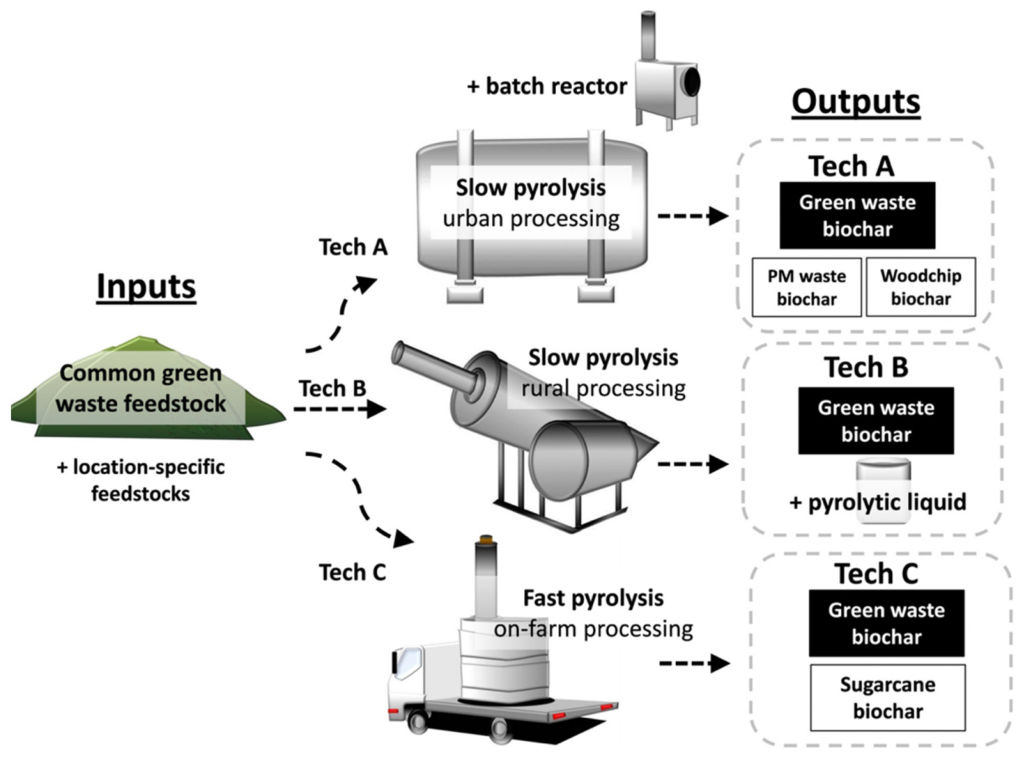Pyrolysis for Biochar and Heat Production: An Overview
In recent years, more and more people have become interested in sustainable living practices, including homesteading. One practice that has gained popularity is the use of pyrolysis to produce biochar and heat. In this post, we’ll take a closer look at what pyrolysis is, how it works, and its benefits.
What is Pyrolysis?
Pyrolysis is the process of heating organic material (such as wood or plant matter) in the absence of oxygen. This causes the material to break down into three main components: gas, liquid, and solid. The type of material being processed determines which component will be most prevalent.
When processing wood through pyrolysis, for example, the solid component produced is called biochar. Biochar is a fine-grained charcoal-like substance that can be used as a soil amendment to improve soil health by retaining water and nutrients.
The liquid component produced through pyrolysis can also be useful. It’s called bio-oil or pyro oil and contains chemicals that can be used as fuel or chemical feedstocks.
How Does Pyrolysis Work?
Pyrolysis typically occurs in a specially designed chamber called a reactor. The reactor may be heated using electricity or an external heat source such as burning wood chips. The temperature inside the reactor must reach between 400-700°C to initiate pyrolitic reactions.
During the process of heating organic materials without oxygen (anaerobic), volatile compounds are released as gases from biomass breaking down; these gases are then collected via tar extractor before condensing into liquids while some remain vaporized throughout the process until they’re later combusted either internally or externally depending on user preference..
Once initiated, the organic material begins to break down into its three main components – gas, liquid, and solid – with each being captured separately. The solid component, biochar, can be used immediately or stored for later use.
Benefits of Pyrolysis
One of the main benefits of pyrolysis is that it’s a sustainable way to produce both heat and soil amendments. By using organic material that would otherwise go to waste (such as wood chips or agricultural waste), you can produce a valuable product while reducing waste.
Another benefit of pyrolysis is that it produces very little pollution compared to other forms of combustion. Because the process occurs in the absence of oxygen, there are no harmful emissions released into the atmosphere. This makes it an excellent choice for those who are concerned about air quality and environmental impacts.
Additionally, biochar produced through pyrolysis has numerous benefits for soil health. When added to soil, biochar helps retain water and nutrients, improving crop yields and reducing fertilizer needs. It also helps reduce greenhouse gas emissions by sequestering carbon in soils for hundreds to thousands of years.
Conclusion
Pyrolysis is an innovative technology with many applications in sustainable living practices like homesteading. Its ability to convert organic materials into valuable products such as biochar and fuel oil provides a win-win situation where wastes are transformed into resources while minimizing environmental footprint along the way.
If you’re interested in learning more about pyrolysis or exploring how it may fit within your homesteading practices, speak with experts on this topic; they’ll provide guidance based on your particular needs from equipment selection down through operation efficiency optimization techniques suited best for your scale operation whether small or large-scale endeavors!


Leave a comment